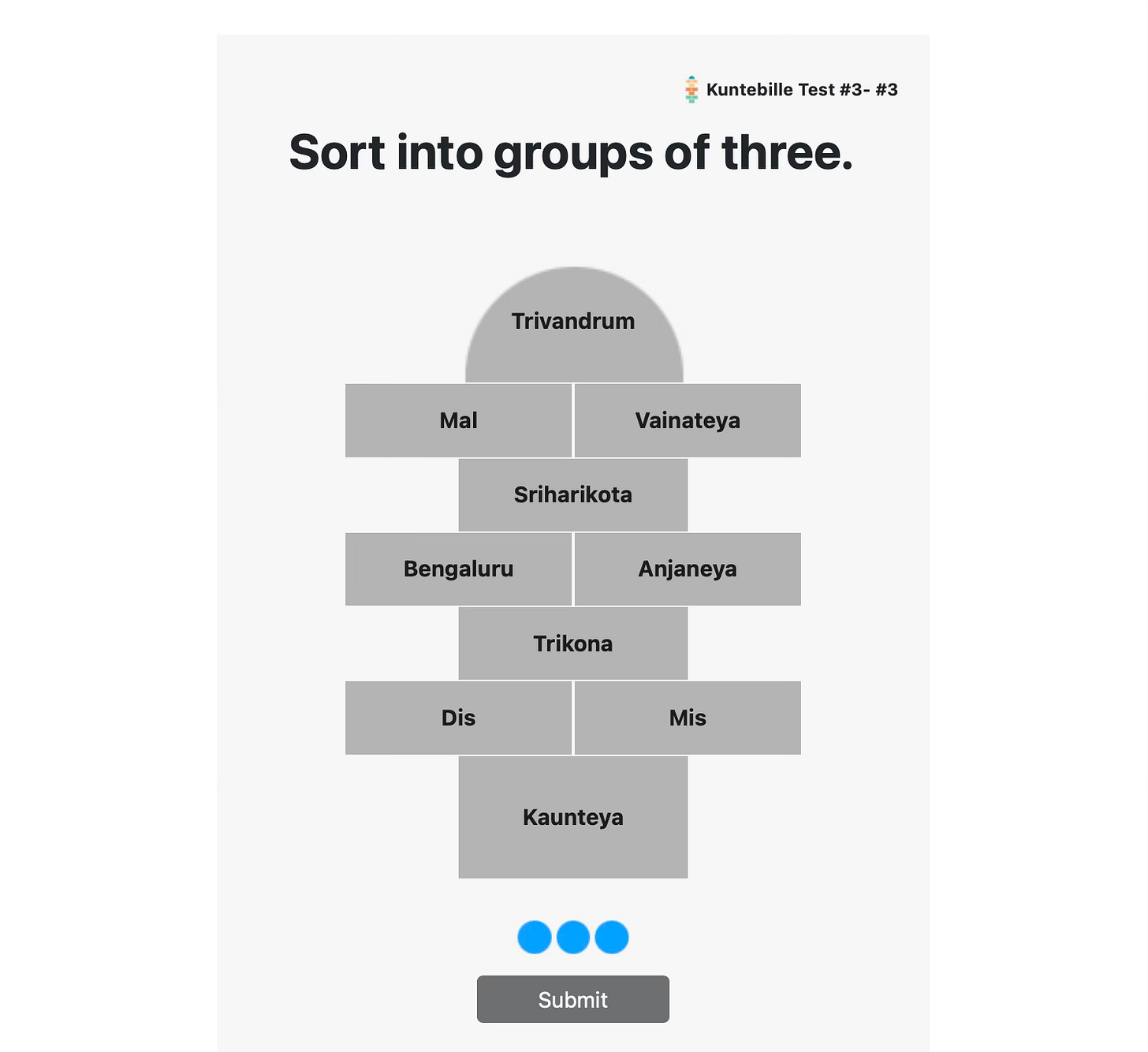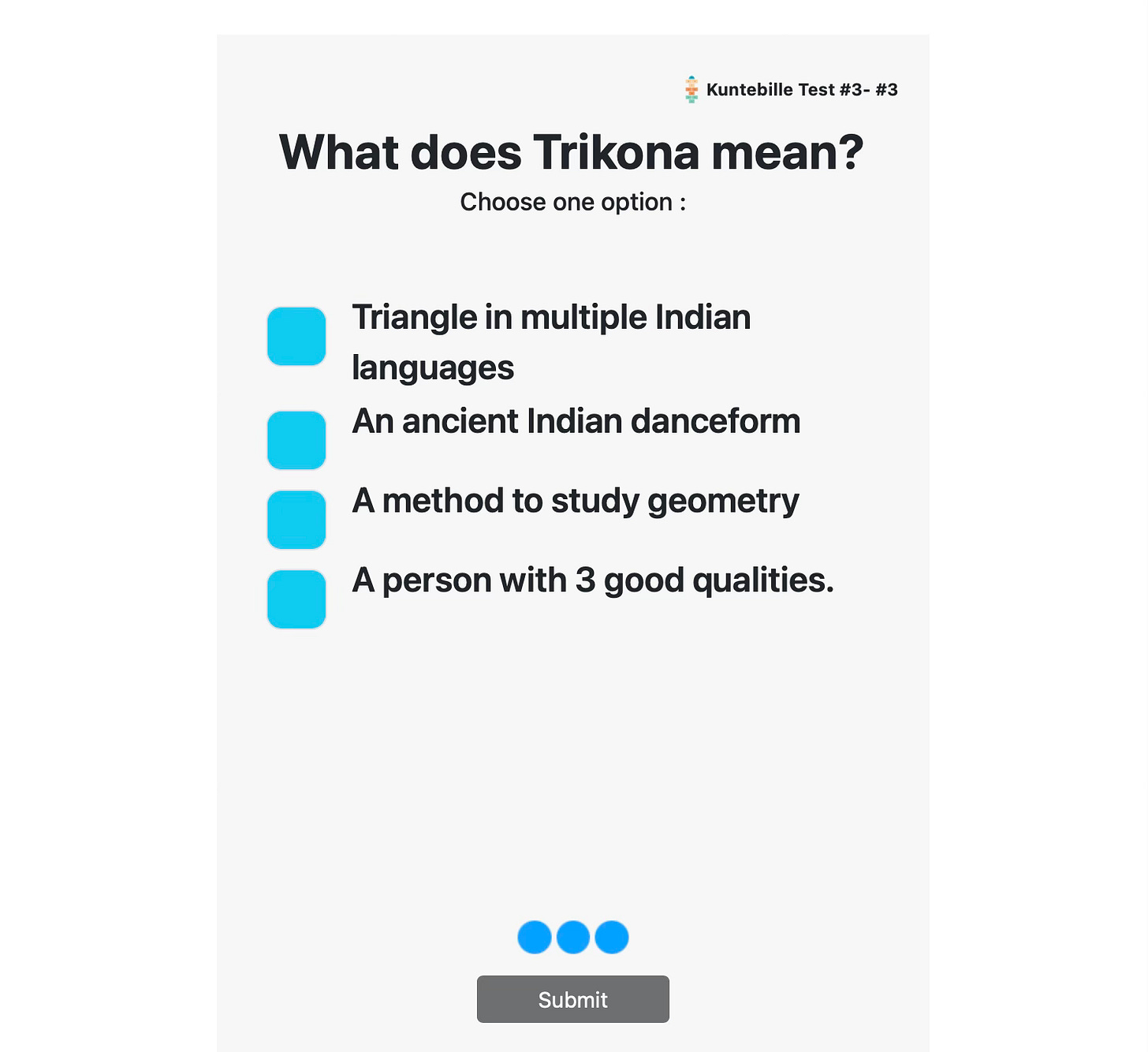Dear friends of Media Buddhi (and welcome new subscribers!),
I hope you’re well. I’m doing just fine, especially since February ended and March is in full bloom. Since 2020 at least, a new pattern has emerged in my life: January tends to be sleepy with some woolly resolutions fading in and out. But February is when I get to do some stock-taking for the previous year and embark on some long-term projects.
This February was no different (as you will see below).
This newsletter has three distinctive parts. Here’s what’s coming up.
A consideration of Media Buddhi turning five.
A new word game — for you!
A thought about a forthcoming essay.
With that, let’s dive in.
Media Buddhi turns five
On 9 Feb 2020, I published my first piece here. In it, I spoke of my ‘Year Zero’ — when I first realised that we had an ‘information pollution’ problem.
My year zero was 2013.
You can read it here, but do watch out for that clunky first sentence!
Since then, I’ve published:
- 100+ essays
- 50+ videos on YouTube and Instagram
- 11 podcast episodes
This is an impressive haul, but if you compare it to the standards of daily news, it isn’t that much. Had I published every week, I would have at least 250 pieces in five years. Had I published every day of the week, that number would have been 1,250 or more!
What could have led me to publish in those numbers? A better writing habit, definitely. But a better habit might not have made that much of a difference because of the way my brain is wired.
For me to write something, I have to wait till I finish thinking a thought completely.
The words of Jiddu Krishnamurti, the teacher, writer and philosopher come to mind:
“Try working out each thought to its completion, carry it right through to the end. You will find that this is very difficult, for no sooner does one thought come into being than it is pursued by another thought.”
And then,
“Thought can only come to an end when the thinker understands himself, when he sees that the thinker and the thought are not two separate processes.”
I’m still working my way through the second part of that last sentence, but I shared it here because I want to emphasise that thinking things through is a long process for me.
Consider three of my most popular essays, and the time it took to think and write them:
Gandhi the Muslim - Three months
A ‘Bechdel Test’ in films for masculinity - Two years
The politics of The Wire, The Quint, Scroll and The News Minute - 8 monthsAnd so, in writing a hundred essays in the last five years, I completed a thought a hundred or more times. This process also helped me develop my true, authentic voice.
This is really nice to have, because I’m now 46 years old, with 20+ years as a journalist.
It’s about [insert expletive] time!
I must also add here that none of this experimentation would be possible without my job at BOOM, the fact-checking organisation where Media Buddhi was born. So here’s to the good folks at BOOM! Support us if possible.
(Through a wandering route, Media Buddhi also led to the Teen Fact-Checking Network in India which I run. It’s in its third season right now.)
A word game - for you!
A year ago, during another fortuitous February, I decided to pursue another thought to its completion. It went a bit like this, “how come there isn’t a single Wordle or Connections for Indians?”
The answer that I came up with was, “you should build one.”
This was a bit ambitious because I’m neither a game designer nor a computer programmer. I do have some experience in building journalistic products, but this would be nothing like I’d done before.
I asked two of my old school pals, Arun and Balachander if they would like to be part of this project. To my mind, Arun would be the finances and numbers guy, and Balachander would be the tech guy. They both said yes.
And so we began, with the following guidelines:
- it should bring joy to players
- it should be fun
- it should teach us something
- it should (ideally) make money
At the back of my mind, I also had a fifth guideline: that it should aid in media literacy. But I didn’t make it a central idea because the focus of the game is to have fun, and media literacy can be a little dry. As we will see, I think I did manage to introduce this fifth element without sacrificing the fun quotient.
Using Canva and generative AI, I built a coded prototype. This code, it turned out, despite my best efforts at coaxing Chat GPT, was just not good enough. It was actually…merde (as the French say).
We would need an actual coder!
After a little of thought and talking to other friends, I realised I actually knew Thomas, a game designer and coder from college.
Thomas also said yes.
I’m going to describe what we did to make the game ‘for Indians’ in another post, but for now here is what came out of it. The temporary name for the game is Kuntebille, the Kannada word for the ancient game of hopscotch.
Players are given this starter screen with a hopscotch-like grid. Hitting the ‘play’ button reveals the starting instructions.
Players are asked to find a common theme linking any three words. There are three possible sets. See the sample screen below.
In the above example, the three correct sets that the player would have to solve are:
Mis, Dis, Mal (they can all be prefixes for the word ‘information’).
Sriharikota, Trivandrum, Bengaluru (they are all places in India with ISRO offices).
Vainateya, Anjaneya, Kaunteya (in Sanskrit grammar, they're matrilineal names one gets by adding '-eya' to the mother's names of Vinita, Anjani, and Kunti. Vainateya is Garuda, Anjaneya is Hanuman, and Kaunteya could refer to any of the sons of Kunti, Yudhishtira, Bheema, Arjuna, and Karna).
Once they get the three sets right, the players would have finished nine steps of Kuntebille. There is however one more step—the tenth—remaining. In order to solve the game, they are presented with a multiple choice question related to this 10th word. In this case, that word is Trikona.
The correct answer is the first one.
The example game you see above is just a test version. The three blue dots that you see represent three ‘lives’, which allows for two incorrect answers in the first stage, and another two incorrect answers in the second stage (the multiple choice question).
In January, we sent out five test games to our families and friends to play and received lots of feedback. The people who loved it really, really loved it. There were significant issues to fix as well.
It turns out, the big challenge is for us to get the difficulty level just right. If it’s too easy, people may not feel challenged, but if it’s too difficult, they might walk away. After all, who wants to be reminded of failure everyday?
I’m hoping that the new, improved, better-looking version of the game will be ready in April. Perhaps even ready to roll out into the world!
That’s where you come in, dear reader. If we get everything right, then I’m hoping you might want to play it first, before anyone else really gets a chance. This is a small thank you for being willing to read this newsletter. When the time is right, I will make an announcement right here, so keep casual lookout for it.
A title for a new essay
For more than 10 years, I’ve obsessed over why we are so polarised as a society and what should be done about it. In a new essay I’m going to publish soon, I’m going to argue for a new way for us Indians to discuss sensitive issues.
But how should I title the essay?
I settled on the provocative, Make India Talk Again.
A friend and well-wisher of Media Buddhi, Pramod Biligiri, suggested that I drop the name, given that it’s a direct reference to a particularly problematic Trumpism.
I took this feedback to a writing group where half the responses were along the lines of this title works well, so long as it is not clickbait. The other half echoed Pramod, for much the same reasons.
Intriguingly, one person said Make India Talk Again stands for MITA, which means ‘friend’ in Odia.
On balance, I’m still inclined to go with that title. We do live in a world that has changed overnight, and the headline is an acknowledgement that the old rules have been upturned. In this mad, mad world, we have to find a way to reclaim conversation.
So there you go dear reader. After five years of Media Buddhi, I've learned that some thoughts take time to complete but there is value in staying with them. Meanwhile, the conversation will continue at least here on this newsletter. One thought, one game, and one issue at a time.







Congratulations!